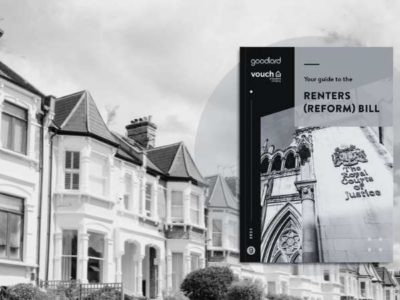Michael Gove has announced that the Government wants to turn their focus to empty retail outlets to help address the housing crisis by converting them into flats to avoid building on the green belt.
The latest announcement comes as the Government aims to deliver a million homes before the next general election, thought to be as soon as next year (2024).
However, the Government’s record for meeting their previous target of 300,000 new homes a year is abysmal, to say the least, and their latest ambitions have been met with criticism, largely due to the fact that the development of commercial premises often yields poor results from a residential standpoint.
Planning Director at Woods Hardwick, Russell Gray, comments:
“A focus on brownfield redevelopment isn’t exactly a pioneering strategy and the task itself is one that comes with a number of complications.
The development economics of brownfield sites are far higher and, as a result, they generally yield a far lower proportion of affordable homes, which we are in desperate need of.
Brownfield redevelopment also tends to mean more flats and apartments and this simply isn’t the type of housing stock that we are short of, we need larger, family suitable homes if we are to make any meaningful headway in addressing the housing crisis we currently face.
All things considered, it’s unclear as to how this latest announcement will help the Government achieve its ambitions of a million new homes over the course of this parliament.
In contrast, Sir Keir Starmer has stated that Labour would give English councils more power over green belt building and so there is now a clear division in the policy position of the two main parties when it comes to meeting housing needs. A division that may well prove pivotal ahead of next year’s general election.”
Mick Platt, Director of the Residential Freehold Association, comments:
“Inner-city housing is a critical part of the puzzle when it comes to addressing the country’s housing crisis and delivering on our environmental targets, but the Government needs to think carefully about the challenges and opportunities associated with high-density housing.
Managing large, complex apartment buildings is not straightforward and the Government’s leasehold reform agenda risks pushing this responsibility onto residents, many of whom do not want it.
We need to maintain consumer choice in the market, ensuring that both leasehold and commonhold tenures are fit for purpose and properly regulated.
Decarbonisation is also an important challenge when it comes to this form of housing and the Government should work with institutional investors and landlords on this agenda instead of trying to drive them out of the market.”
Commenting on the Government’s announcement to build 1 million new homes over this Parliament, Lawrence Turner, Director of Boyer (part of Leaders Romans Group) commented:
“Michael Gove’s announcement today will make it easier to convert retail premises and agricultural building into homes and relax Permitted Development rules for homeowners to convert loft spaces and renovate buildings – building on the Government’s ‘Brownfield First’ policy announced in February this year.
The policy announcement is also expected to include creating Development Corporations that would have CPO powers to directly acquire land and build homes.
Regrettably, the current policy announcement falls significantly short of addressing the UK’s housing crisis.
Offering a complete solution demands a balanced strategy, encompassing both brownfield and greenfield development, and a proper review of the Green Belt.
Unfortunately, the present government announcements sidestep any commitment to development on greenfield land.
Prioritising brownfield land is nothing new. Governments have always prioritised the development of brownfield land – land that has been previously used for industry, commerce, or other urban uses, and is now derelict, under-utilised or contaminated due to its former uses.
These areas always have presented an excellent opportunity for re-development, revitalising towns and cities, and providing new homes.
However, the challenge for Mr. Gove’s policy announcement is twofold:
1. The main constraint with brownfield land lies in implementation.
Key challenges include securing funding for comprehensive site clean-ups, streamlining complex planning processes, and ensuring development remains viable while still delivering enough affordable homes.
The introduction of development corporations will go some way to addressing these issues, but development corporations take some time to set up; are often perceived as undemocratic by local communities, generate significant opposition.
Furthermore Compulsory Purchase is a very complicated and protracted process.
2. There is simply not enough brownfield land to deliver the number of new homes that we need.
The Government’s pledge to deliver 300,000 homes a year has not been met, and only this month the Levelling Up, Housing and Communities Select Committee a report to say this figure would be “impossible to achieve” by the mid-2020s.
Ahead of the policy announcement Mr Gove has said that:
“Britain needs more homes to fulfil more dreams of home ownership and increase choice for renters…But they must be of the right type and targeted in the right places.
So we must build more in the places that make sense — in our inner cities so that we protect our countryside.
And we must make better use of the buildings we already have — empty shops or offices cannot be gathering dust while we have an urgent need for more homes.
That is why we are reviewing the rules around permitted development rights to make sure we can regenerate, build and grow.”
This is correct, Britain does need more homes in the right places.
However, we also need to make sure we build enough homes too.
Prioritising new homes on brownfield land is the correct approach, but this strategy needs to be delivered alongside the delivery of new communities on greenfield land close to where people live and work and near to transport hubs.
Often the careful release of Green Belt land in the most sustainable locations can provide significant benefits to local communities:
1. Increasing the supply of new market and affordable homes, providing more choice for families to get on the housing market in the towns or villages where they grew up
2. Delivering supporting community infrastructure and investing in the local economy
3. Allowing opportunities for the creation of well-designed beautiful places.
The delivery of new communities allows for long-term investment in a local area and through good placemaking can help re-green our towns and cities.
In conclusion, we need an integrated housing policy that brings together both brownfield and greenfield housing development as a solution to the UK’s housing crisis.
Such an approach would increase the supply and choice of housing, promoting economic growth, and enabling the construction of well-planned and sustainable communities.”
Colin Brown, Head of Planning & Development at Carter Jonas, comments:
“There is some encouragement in relation to suggestions of new lines of funding to help local authorities with their significant workload / backlogs.
Development corporations may well have a place if the Government genuinely wishes to ramp up delivery, for example in Cambridge.
Cambridge is however surrounded by a Green Belt so significant questions will remain as to how you capitalise on its ongoing potential without recognising that some green belt development will almost certainly be needed.
How you leverage in new infrastructure is a further key question.
What seems clear however is that national housing targets look set to be abandoned.
The reference to urban areas and brownfield sites anticipates the fact that greenfield development in areas of greatest housing need do not really feature.
While we would support use of brownfield land it is simply incorrect to suggest that the housing crisis can be met in this way.
Greenfield and green belt land will both need to be considered.”
Paula Higgins, CEO of property advice website HomeOwners Alliance made the following comments:
On building more homes in inner-cities:
“We support action to build more homes, making use of inner-cities and brownfield sites to build more homes.
While making it easier to convert empty retail premises into flats and houses is welcome in principle, these conversions are often of lower quality with poor ventilation.
They certainly haven’t always been beautiful! Government must learn from its mistakes by creating a wild west of office to resi conversions.
Developers must be required to meet all building and space standards; these developments must be properly inspected by a third party and buyers should receive a full structural warranty.
We already warn our readers to confront the reality before buying such homes: very few conversions have private or shared outside space and some are located in very noisy and polluted streets, while others on business parks are sometimes miles from shops and schools.
There is a risk these conversions are unsustainable and quickly become homes people don’t want to live in once the newness wears off.
If the government wants to truly build homes in the places people want to live, they need a strategy for building in suburban and rural areas as well as cities.”
On leasehold:
“We would also implore the government to take the opportunity to make all new conversions and new build flats commonhold.
This would demonstrate that government is serious about unpicking the leasehold system.
The leasehold system continues to punish homeowners and is, in Michael Gove’s own words, unfair and ‘an outdated feudal system that needs to go’.
We cannot forget the tens of thousands of leaseholders who find themselves in a sticky situation.
Because of the government’s promises over the last few years, they are stalling on their lease extensions which are costing them more the longer they wait.
Government must make leasehold a priority bill in the Kings Speech and resist the lobbying effort from freeholders and managing agents to drive down the cost of lease extensions.”
On the promise to cut red tape:
“You don’t have to go back very far to unearth previous attempts to reform the planning system to encourage house building.
In 2020, Robert Jenrick announced reforms to protect green spaces while making it easier to build on “brownfield land”.
No one can argue with this, but we need to see the government deliver.”
Verity Davidge, Director of Policy, Make UK Modular, comments:
“Today’s announcement to manage the housing planning backlog through a planning skills delivery fund is a step in the right direction.
Part of the fund should be dedicated towards ensuring planners have the knowledge and expertise of modular housebuilding too, which can help tackle the housing crisis we face in the UK.
That said, these policies only begin to scratch the surface and we need to see more ambitious reforms to housing.
Lowering stamp duty for EPC A rated homes and allocating a higher proportion of the affordable housing programme to modular housing would unleash the potential of a dynamic and innovative sector able to provide homes greener, faster and better.”





















Comments